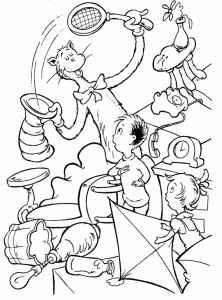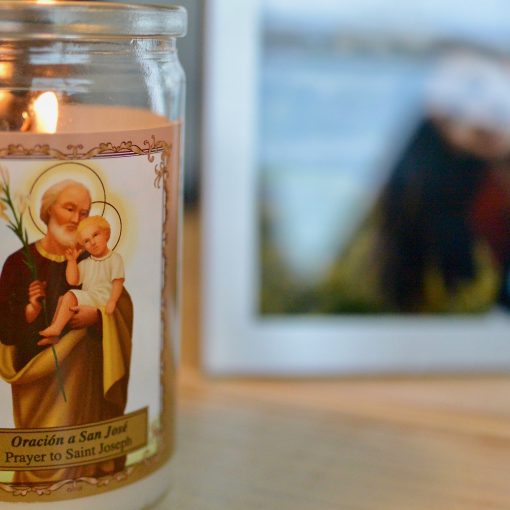I did not realize until I performed a quick Google search that this “liturgy” had actually been used (and commented upon) already. I arrived at church yesterday morning to find that we had two Eucharistic services scheduled, a traditional in the sanctuary and a “Seuss Eucharist” in the church hall. All summer long our children’s Sunday School program had been using Dr. Seuss books for the launching point for teaching and this was apparently the culmination of the program. We have an excellent person leading our Sunday school programs and while I found it an odd choice I was reassured by the fact that every lesson and point that the teachers were making with the Dr. Seuss books were being followed up with quotes from Scripture. (At our service, apparently unlike the service in Pittsburgh, no Dr. Seuss books replaced Scripture in the readings.) Indeed, given that Mr. Geisel himself was a practicing Christian it is quite likely that his faith influenced his writing.
While Dean Munday of Nashotah House felt that this was indeed a sacrilege, I am not so sure. Munday wrote
Now, before someone calls me a GRINCH for casting aspersions on this program, let me be clear about my reasoning. The Eucharist is to proclaim the Lord Jesus Christ’s death, whenever we eat the bread and drink the cup, until He comes again. That is its message, and that is the meaning. It needs no other metaphor. Dressing it up in other garb can only obscure—not enhance—its message and its meaning.
I can assure you that I was reading the liturgy very carefully during the service. (I can also assure you that I was not entirely convinced of it nor was I entirely comfortable. But I would likely say the same thing after being at my parent’s church for a service.) What I was very surprised to realize is that the theology of the eucharist was essentially left intact. Consider Eucharistic Prayer B from the Book of Common Prayer (1979):
On the night before he died for us, our Lord Jesus Christ took
bread; and when he had given thanks to you, he broke it, and
gave it to his disciples, and said, “Take, eat: This is my Body,
which is given for you. Do this for the remembrance of me.”
After supper he took the cup of wine; and when he had given
thanks, he gave it to them, and said, “Drink this, all of you:
This is my Blood of the new Covenant, which is shed for you
and for many for the forgiveness of sins. Whenever you drink
it, do this for the remembrance of me.”
Some would, of course, argue that this itself is not a very appropriate liturgy either, but I will not go there. Now consider the “Seuss” prayer. [mfn]By the way, I have no idea if our diocese, which allowed this liturgy’s development, got approval to use the name and likeness or not.[/mfn]
On the night before he died
Our Lord lifted some bread
And said with loving pride,“Dear friends, my body this is
Take it; share it;
For this is part of His biz. [mfn]My least favorite part of this prayer, I have to say.[/mfn]From now on, whenever you meet
I want you to remember our time
And let this be the thing that you eat.”When they were done with their sup,
Jesus again spoke with his friends
While lifting the cup“For the New Covenant, this is my blood
A sign of the Lord’s continuing love.
Let it replace the one from the floodWhenever you drink this, think of me,
Keeping me close at heart,
So that our friendship may go on endlessly.”
Compare the two. I think that the one developed by the youth actually conveys the theology of the original prayer quite well. In fact, it even adds the reminder that the “New Covenant” is all part of God’s Heilsgeschichte that he has been working out with his people since creation, something that the other prayer simply alludes to. All in all, the content of this liturgy was actually very…orthodox! Believe it or not. (In fact, references to God remain “Father, Son, and Holy Spirit.” No gender inclusive efforts or real silliness there.)
When we consider that this liturgy was developed by the youth at a youth conference and was part of a youth service I can see its value; I begin to think of this as translation. The children who developed this liturgy clearly had to read, know, and understand the Great Thanksgiving in order to be able to render it into “Seuss” language. For the elementary school children who were there taking part in this service, they were able to hear and see the Eucharist in a way that is more accessible to them while still conveying the message of Christ’s sacrifice for them. They were listening and participating in a way they never do when we are on hard benches dozens of feet away from the action and listening to language that can be odd and stilting even for adults. I was actually struck by the thought that the Seuss language sounds like it could have been a dialect from the 16th century, in other words, the King James version of the Bible. I should also add that the sermon was excellent, speaking of God’s love for us in sending his Son.
So all in all, I do not find this sacrilegious. I was not terribly comfortable and it certainly cannot and should not be on a regular rotation of services, but if our goal is to engage our children, from elementary school through high school, then this service, its creation and participation, accomplished that goal while maintaining the integrity of the theology of the service.
Finally, as a brief aside, My wife and I have often debated how his name is pronounced. Wikipedia tells me this:
Geisel’s pen name is regularly pronounced /ˈsjuːs/ sewss, an anglicized pronunciation inconsistent with his German surname. He himself noted that it rhymed with “voice” (his own pronunciation being /ˈsɔɪs/ soyss) and Alexander Liang (his collaborator on the Dartmouth Jack-O-Lantern) wrote of him:
You’re wrong as the deuce
And you shouldn’t rejoice
If you’re calling him Seuss.
He pronounces it Soice.Geisel switched to the anglicized pronunciation because it “evoked a figure advantageous for an author of children’s books to be associated with—Mother Goose“[and because most people used this pronunciation.




